Danny Boyle on 28 Years Later sequel The Bone Temple, Cillian Murphy’s return — and THAT shocking pregnancy
The British director spills the beans on what's coming next for his zombies-in-the-countryside trilogy — along with some pretty big sequel spoilers...
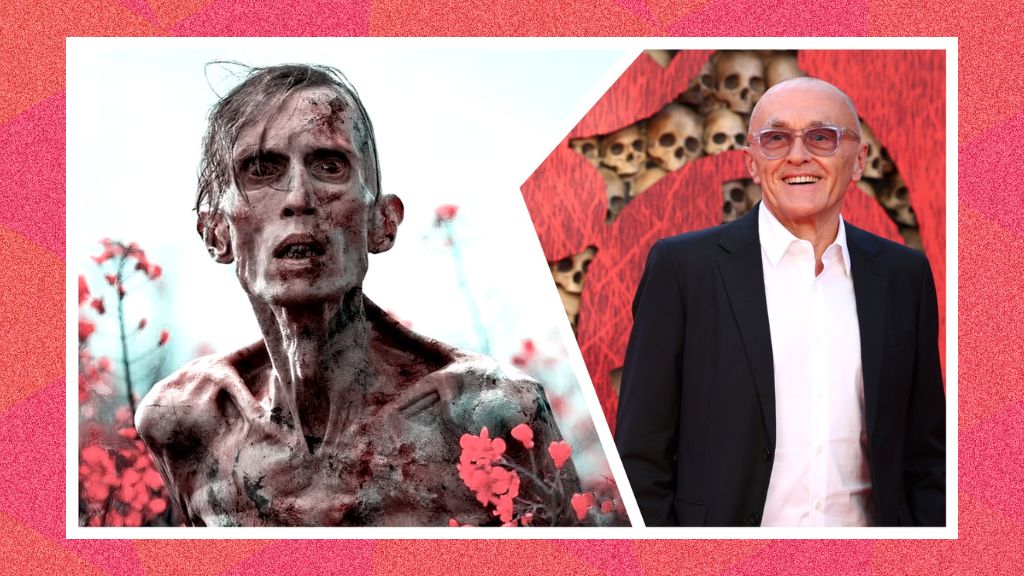

Its infected terrors may be shambling around, but the recently-released 28 Years Later is sprinting towards smash-hit status at the box office. Director Danny Boyle’s return to the not-quite-zombies franchise has been estimated to have made $60 million in its first three days in cinemas globally, putting it on track to become one of the year’s biggest films.
And so with the masses lapping up this very British take on post-apocalyptic horror, Shortlist finds Boyle in a particularly loquacious mood, with the director hosting a very special screening of 28 Years Later this week on his home turf in East London.
The venue — St Anne’s Church in Limehouse — is a fitting one, not just for its ominous Hawksmoor architecture, but the fact that it features in 28 Days Later, the first film in the franchise. It’s here where Cillian Murphy’s Jim first encounters a ‘Rage’ infected person — a demented priest. As you’d imagine, finding a place of worship willing to open their doors to the end times was not an easy task.
“We needed to find a church because it felt like a place where this scene that we had depicted would take place. But there needed to be something written on the wall, that a lot of churches weren’t keen on,” remembers Boyle.
The words?
“‘The end is extremely fucking nigh’,” laughs Boyle. “The other problem was we had to fill this space with what was assumed to be dead bodies. We had very little money to make the film, and couldn’t afford that number of extras. So we pulled a trick where you put out a competition and say, if you turn up for a bit of filming, there's a prize. The first prize was a weekend in Malaga, the second place prize was a week in Malaga!”
The memory of the East London shoot is a fond one for Boyle — enough for the proceeds of the night’s screening to go towards renovating the church itself. 28 Days Later would go on to be a huge, influential success for Boyle, spawning a direct sequel, of which Boyle and writer Alex Garland were co-producers, and revitalising the zombie genre. But its success wasn’t a given.
Get exclusive shortlists, celebrity interviews and the best deals on the products you care about, straight to your inbox.
“People said we can’t call the film 28 Days Later — there’s a Sandra Bullock movie called 28 Days, which is a quite successful romantic comedy, and people might get seriously distressed if it gets mixed up,” recalled Boyle.
“And we said, ‘Good.’”
Now, with 28 Years Later riding high in the charts and internet discourse as fevered as the poor souls infected in the movies, Boyle is going weapons-free on spoilers, behind the scenes details, and the future of the franchise. Spilling the beans on exactly what to expect from the upcoming sequel 28 Years Later: The Bone Temple, perhaps save this page for later if you’ve not yet seen the latest film. For everyone else, here’s Danny Boyle on eight key points about his latest hit, and what’s next for the 28 Years Later franchise.
[Spoiler alert: This post contains details of the plot to 28 Years Later]

1) 28 Years Later almost told a very different story
Kicking off a new trilogy, and focussing on the family tensions that arise in the bleak wake of a pandemic, 28 Years Later’s pastoral setting is a departure from the urban sprawl of the earlier films. But that’s nothing compared to how vastly different the story very easily could have been.
“We did develop an idea at one point maybe 10 years ago, but it felt a bit obvious,” revealed Boyle.
“And by that I’m not disparaging the idea, but it was like a weaponized virus type sequel, which is sort of what you’d expect, almost. Alex [Garland, series co-creator] wrote scripts, but it didn't really feel like it was anything that got any traction between us. It eventually led to this much bigger idea, the idea of this film, and that there would be three films. That start is what you see here.”
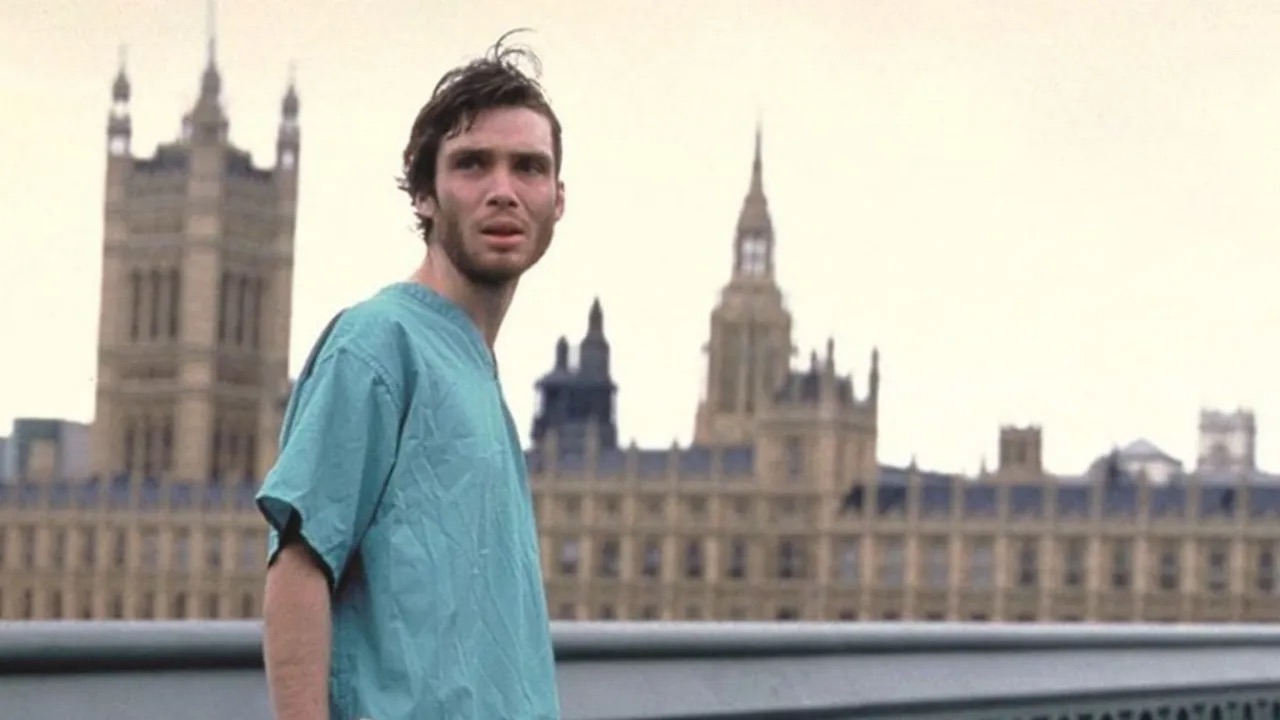
2) Cillian Murphy will be back — but the wait will be longer than you expected
If you’ve yet to see 28 Years Later and the thought of a spoiler-filled article fills you with horror, then this is going to send you into a tailspin. Spoiler alert — Boyle revealed what to expect from sequel 28 Years Later: The Bone Temple’s ending.
“28 Years Later is the start of the boy's journey, and the second film, which has been shot by Nia da Costa back-to-back with the first film, features Jack O'Connell AKA Sir Lord Jimmy Crystal. And we'll find out what he's about,” teased Boyle.
“There’s a lot of Ralph Fiennes in there, and the big Samson infected guy in the second film. Then the third film, we're trying to finance at the moment, so that's not shot yet.”
But the connective tissue from second film into the third has already been established, with Boyle having seen a rough cut of the sequel. And it’s only at its end will Cillian Murphy, Oscar-winning star of the very first ‘28’ film, make his return.
“What Jack O’Connel and the more junior character does at the end of this film, that's what happens at the end of the next. I saw a version of that with Cillian.
“I've seen it, it's really well set up, and it kind of gives you a feeling of really, real warm pleasure. ‘Oh, it's Cillian!’. I don’t know why, it’s not like we’re close mates, we work together sometimes! But yeah, there’s this enormous feeling of well being because he’s turned up. But then he’ll be back, and there will be a lot of him in the third film.”
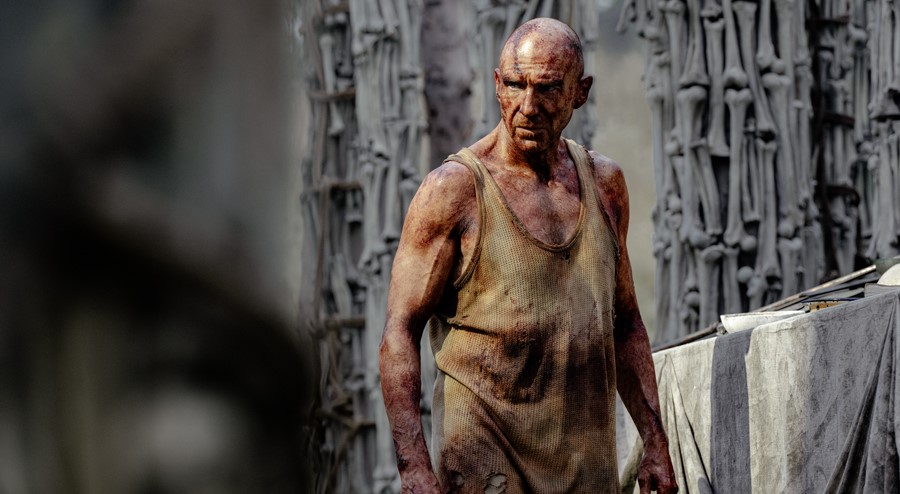
3) Ralph Fiennes’ Dr Ian Kelson could prove an unlikely hero
Ralph Fiennes’ role in 28 Years Later was shrouded in mystery going into the film’s release. Trailer footage and stills gave him an air of menace, and the film’s early scenes set him up as a dangerous outsider.
But in fact, he’s closer to a post-apocalyptic Yoda — and Dr Kelson’s history as a medical professional is likely to become crucial to this new trilogy’s arc.
“Kelson’s attitude is that people who are sick are the same as people who are not sick, and that sickness, whether it's cancer or whether it's the Rage virus, it's just sickness,” says Boyle.
“You still most represent the humanity of people in some way. Everybody talks about the scene in the first film with the empty Westminster Bridge, and I went there for a photoshoot for The Sunday Times. It’s where the Covid memorial wall is, and I hadn’t seen it for a while, where everybody's drawn the little red or pink hearts on this ugly concrete wall that runs opposite Parliament. It's now a haze of paint all the way down the river, really moving.
“And that’s basically what Kelson is doing with his skull sculptures really. He's just creating something like a memorial, perhaps it's for the future generations to look at and to remember people and remember loss. [With Jodie Comer’s character Isla] that's why though he can't treat her, he can help her. And he can't deal with the infection…well, yet…”
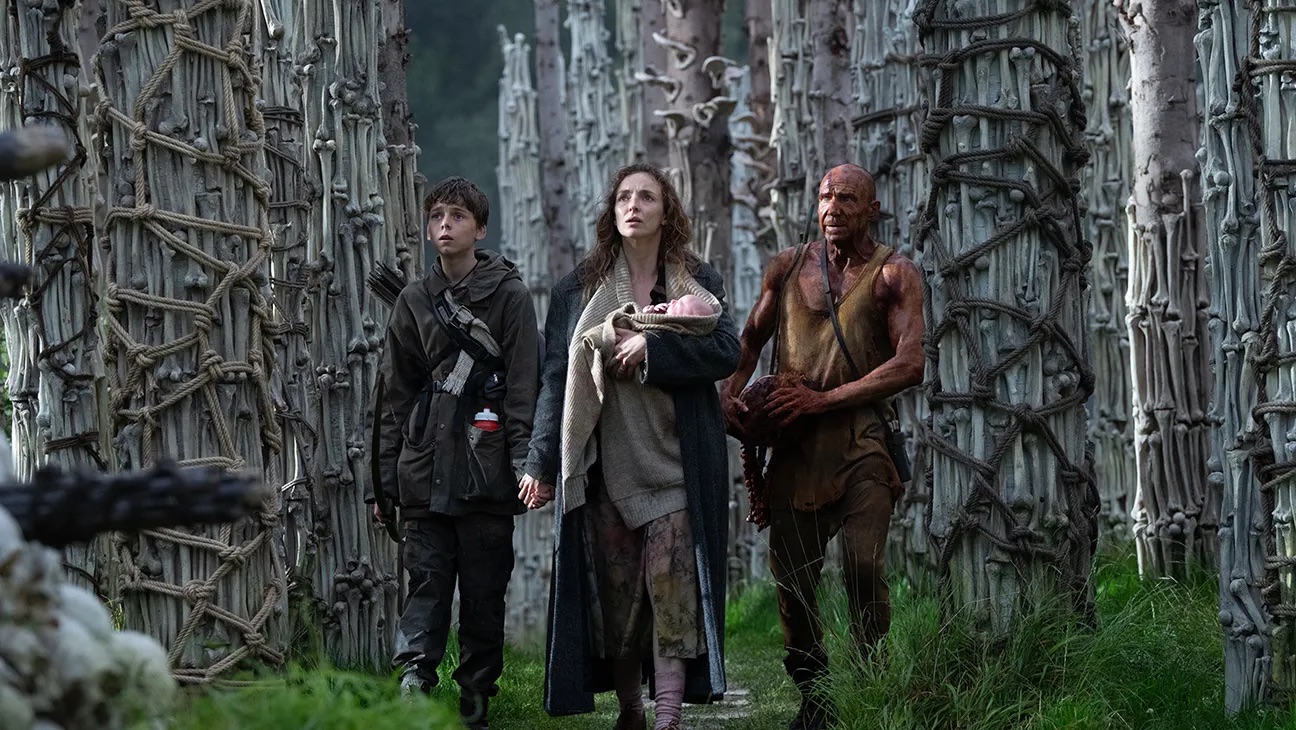
4) Can 28 Years Later’s zombies now get pregnant?
“That’s the $64,000 question,” laughs Boyle. 28 Years Later features a harrowing scene in which an infected woman gives birth — seemingly to an infection-free child. But was she pregnant before becoming infected, or are the rotting humans now getting randy post brain death?
“It's a very interesting question, which we've yet to answer,” admits Boyle.
“There were three stages of evolution to the infected — the slow-and-lows who stay on the ground and don't use much energy and feed off worms and snails and berries or whatever, the infected who learn to hunt and kill and then the Alphas emerge as the dominants amongst that pack. But there was a fourth stage, which is obviously to do with procreation and nature finding a way…”
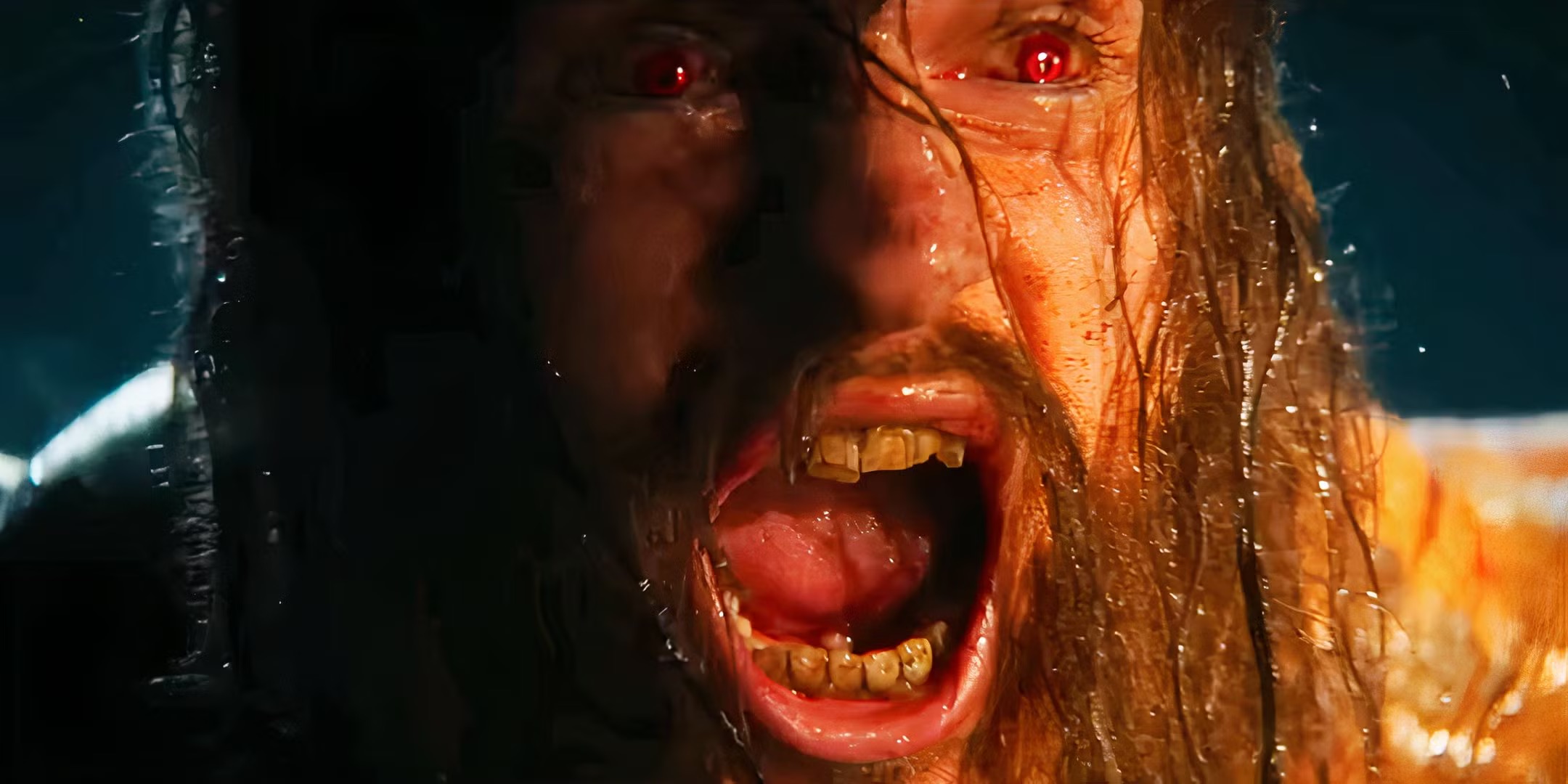
5) Covid had an undeniable impact on 28 Years Later, but not how you’d think
For many, the horrors of 28 Days Later came all too close to being realised during the Covid-19 pandemic. Death lurking around every corner, suspicions high and an eerie quiet over lockdown streets, the parallels to Boyle’s first film were unfortunately easy to find, especially for UK’s Londoners.
“The first film, with Cillian Murphy walking around London was obviously referenced when COVID broke out around the world,” notes Boyle. “It was strangely familiar now, something that was unimaginable, though to belong just to movies, actually could happen. Your city or town could be just completely transformed, its identity, overnight.”
But it was the human behaviours over those awful years that had the most influence on the direction of 28 Years Later.
“What was more interesting as we went on with COVID, was that to begin with we were all really panicked. We wore face masks and gloves and disinfected vegetables or whatever. But then you don't keep that up,” points out Boyle.
“We began to take more chances, to try to find out where the limits of risk were, which
is a very human thing to do. And so obviously, because our story is 28 years later, the characters take enormous risks. We’re taking 12 year old boys to an infected mainland which, as the mother says, is crazy, but actually the rest of the film’s island applauds it. If the outbreak had just happened, you would never do that in a million years. Except it doesn't take a million years. It doesn't even take 28 years.”
6) That incredible soundtrack owes a debt to Trainspotting
Boyle’s films are known for their electric soundtracks — whether that’s the Bollywood-inspired Slumdog Millionaire or the rave-infused rock of Trainspotting, the film that catapulted Boyle into the mainstream in no small part thanks to its iconic soundtrack. 28 Years Later is no different, with a challenging multi-genre score from Mercury Prize winning indie darlings Young Fathers. In a wonderfully circular touch, there’s a link here back to Trainspotting, too.
“Young Fathers are a band from Edinburgh — they come from some of the estates that Trainspotting was written about, although they're a much younger generation, obviously,” says Boyle.
“When we did the second Trainspotting film, I used some of their songs in that, and they visited the set, just to see what it was like. We became friends then. When we settled on this film, I wanted to take a lot of risks with the soundtrack, so I asked them to do it. They haven't done a film before, and they agreed, and they've been amazing. It's a beautiful soundtrack.”
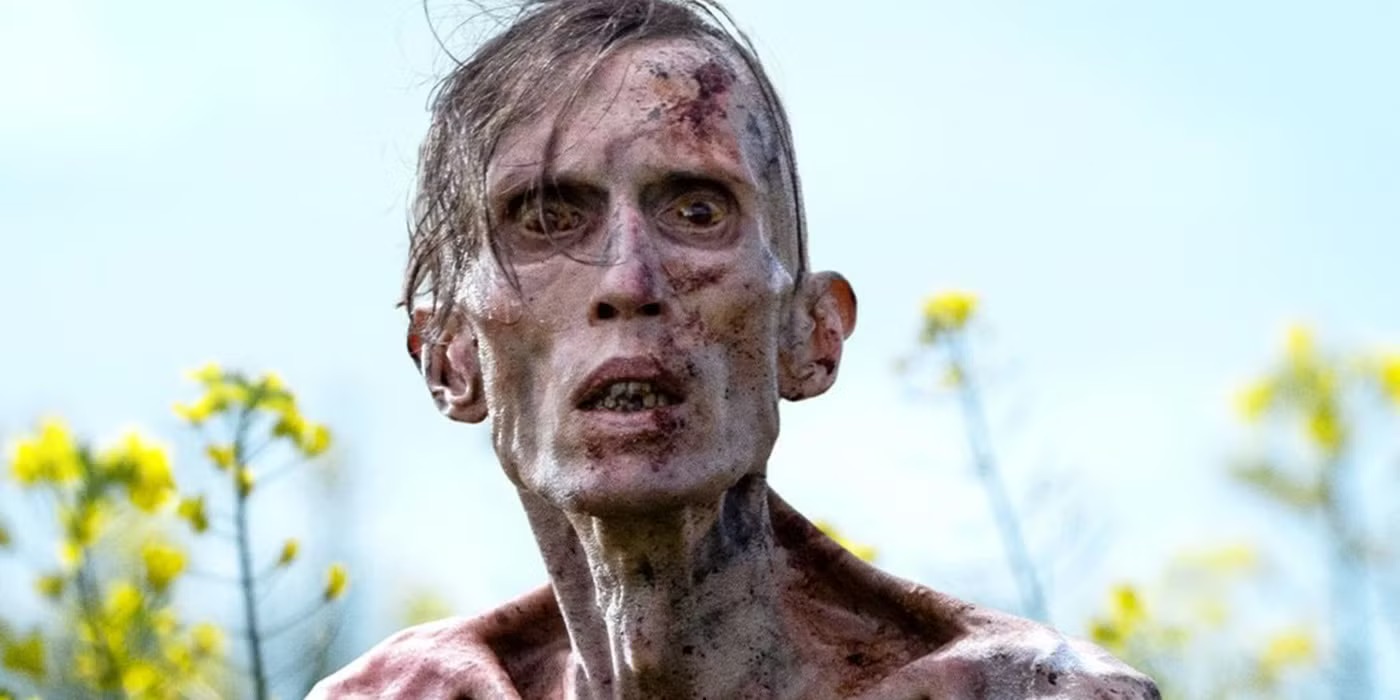
7) The shows influenced by 28 Days Later opened doors for this sequel
The years since 28 Days Later’s release in 2002 have seen a boom in pop-culture takes on the apocalypse, and Boyle’s film’s fingerprints can be over all that have followed. But the explosion of end-of-the-world, zombie-filled tales created new opportunities for this latest effort, encouraging Boyle to push boundaries.
“The first movie was quite a big hit, it led to a lot of stories being written, especially on television with The Walking Dead and The Last Of Us. It's extraordinary horror, the apocalypse,” says Boyle.
“I don't know whether we're getting closer to it, but there's no less appetite for it at all. They tend to wear themselves over for a while. I think we genuinely want to push it a bit further. I think they want all to be more emotional in certain circumstances, and we try to do that with this. But it's surprisingly rational when you're expecting a kind of horror experience. So it’s become more flexible.”
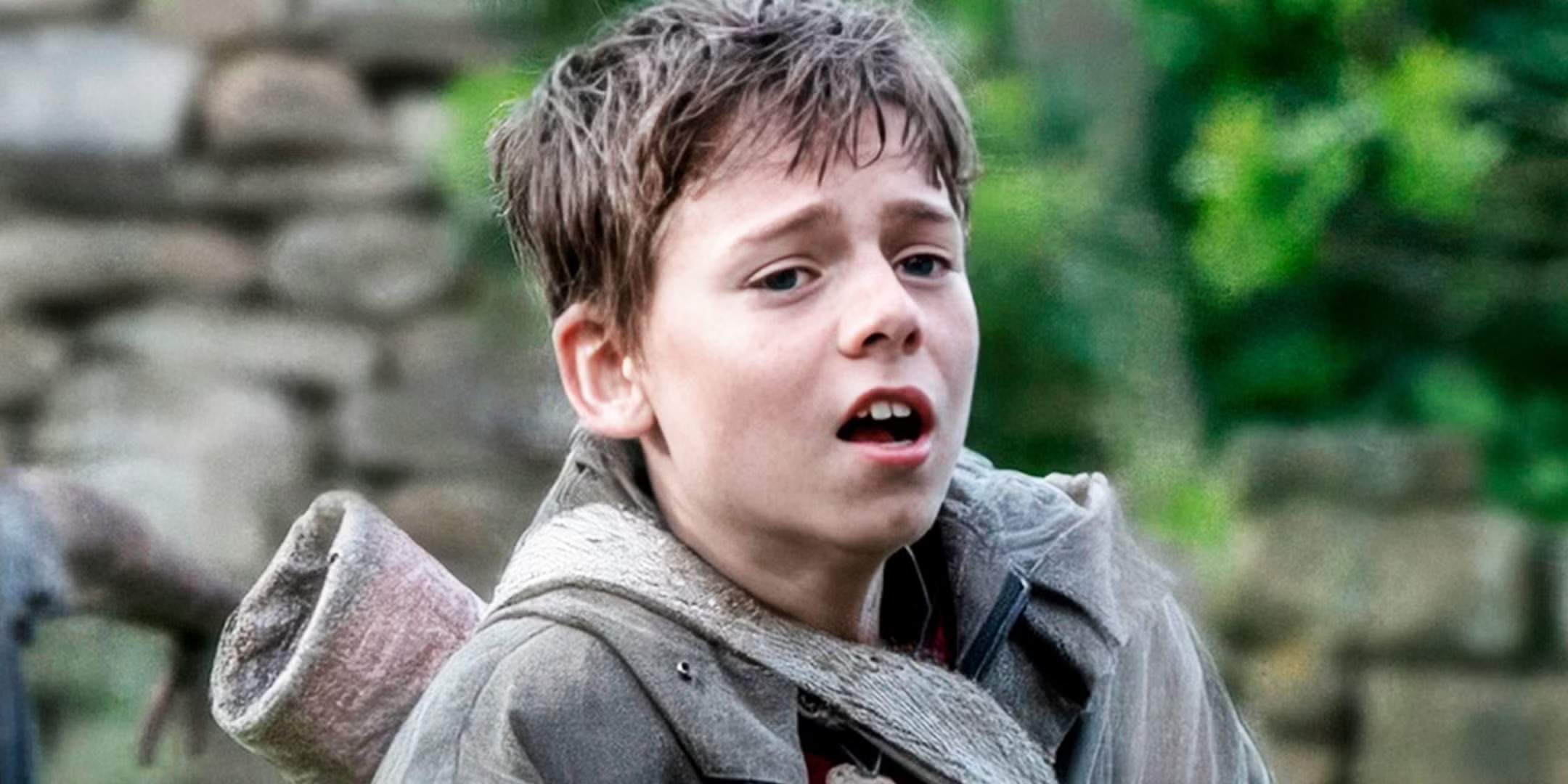
8) Every child actor wants to go to Hogwarts — and that’s a good thing for audiences
Danny Boyle’s films regularly feature youngsters in prominent roles, whether that be Megan Burns as Hannah in 28 Years Later, or Alex Etel as Damian in Millions. But casting Alfie Williams, the young star of 28 Years Later correctly was crucial — the entire plot revolves around his actions.
It’s a process that’s become far easier over the years thanks to one, somewhat obvious reason.
“I’d done a search in Liverpool and Manchester for boys of a similar age [to Etel in Millions], and the standard now is much higher generally. It's Harry Potter that's to blame,” jokes Boyle.
“Because kids look at Harry Potter and they go, ‘Oh! I talk like that!’, or ‘That's my country’ albeit in a fantasy world. And they feel like ‘I can do that, I can have a go at that’.
“So it's extraordinary, the standard is so much higher. But Alfie was exceptional. And clearly we need something very exceptional.”
Plans for a trilogy do pose a problem for a growing teen though.
“When we started shooting with him, his shoe size was six. And, no word of a lie, when we finished shooting with him, his shoe size was nine and a half. Alex Garland is going to have to do a lot of writing to explain that!”
28 Years Later is in cinemas now. Its sequel, 28 Years Later: The Bone Temple, is set to release on January 6th, 2026

Gerald Lynch is the Editor-in-Chief of Shortlist, keeping careful watch over the site's editorial output and social channels. He's happiest in the front row of a gig for a band you've never heard of, watching 35mm cinema re-runs of classic sci-fi flicks, or propping up a bar with an old fashioned in one hand and a Game Boy in the other.
You must confirm your public display name before commenting
Please logout and then login again, you will then be prompted to enter your display name.
-
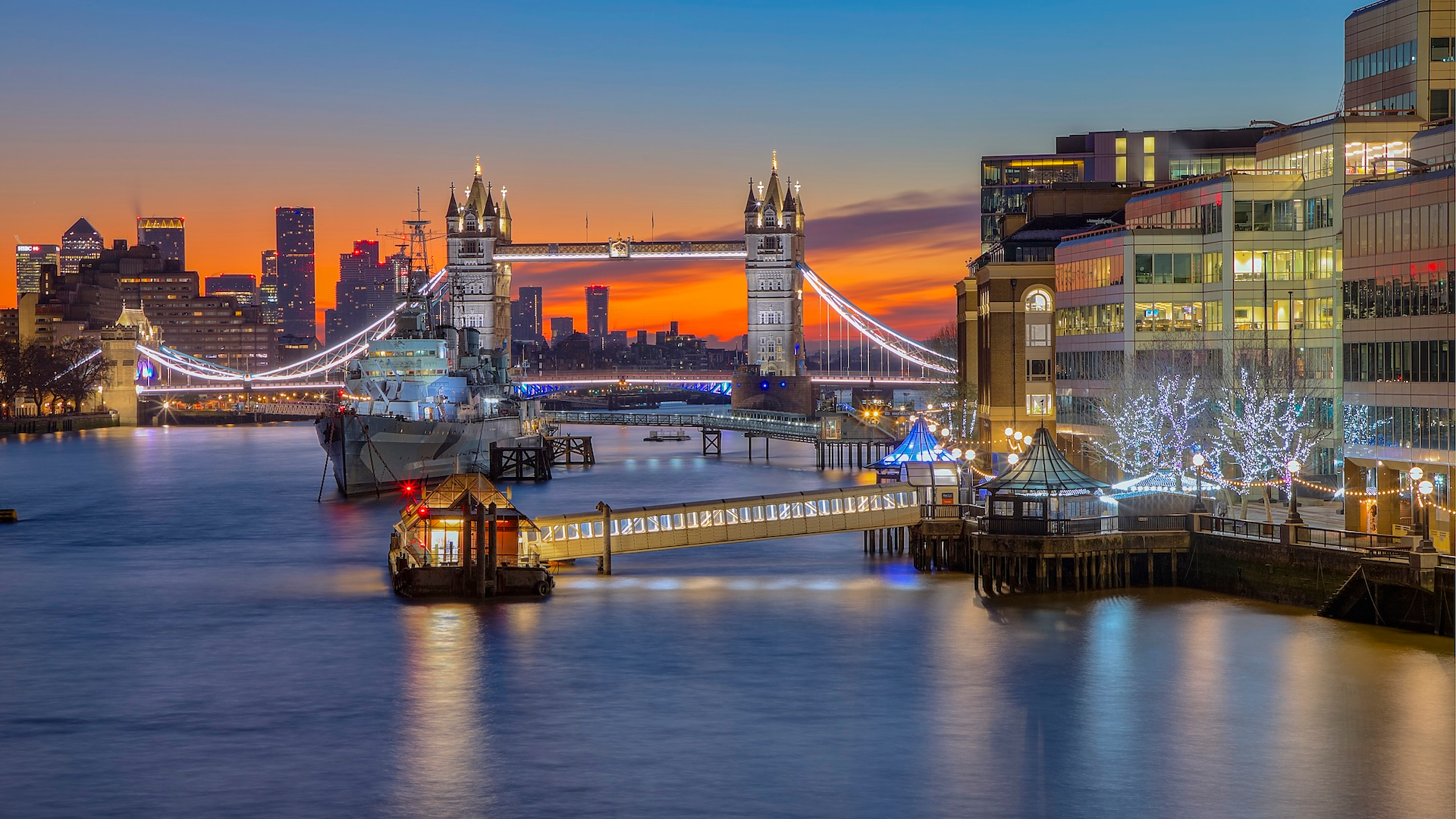 Save on 7 top Christmas events in London with our exclusive voucher code
Save on 7 top Christmas events in London with our exclusive voucher codeSeven magical London experiences to make your Christmas sparkle
-
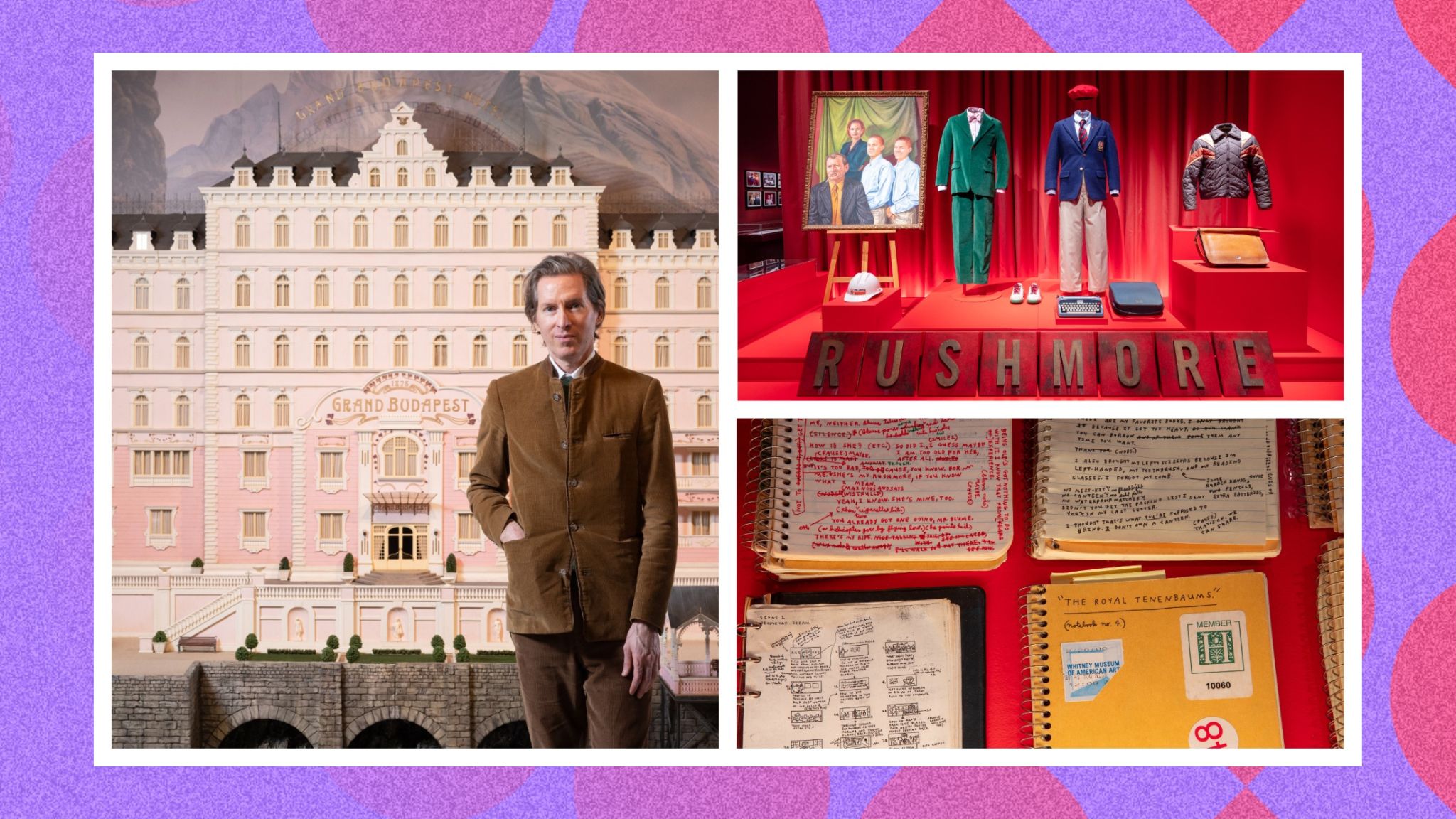 From the actual Grand Budapest Hotel to a topless Bill Murray: The Wes Anderson archive exhibition's best bits
From the actual Grand Budapest Hotel to a topless Bill Murray: The Wes Anderson archive exhibition's best bitsLondon’s Design Museum throws open the doors to Wes Anderson’s wonderfully weird world and personal archive.
-
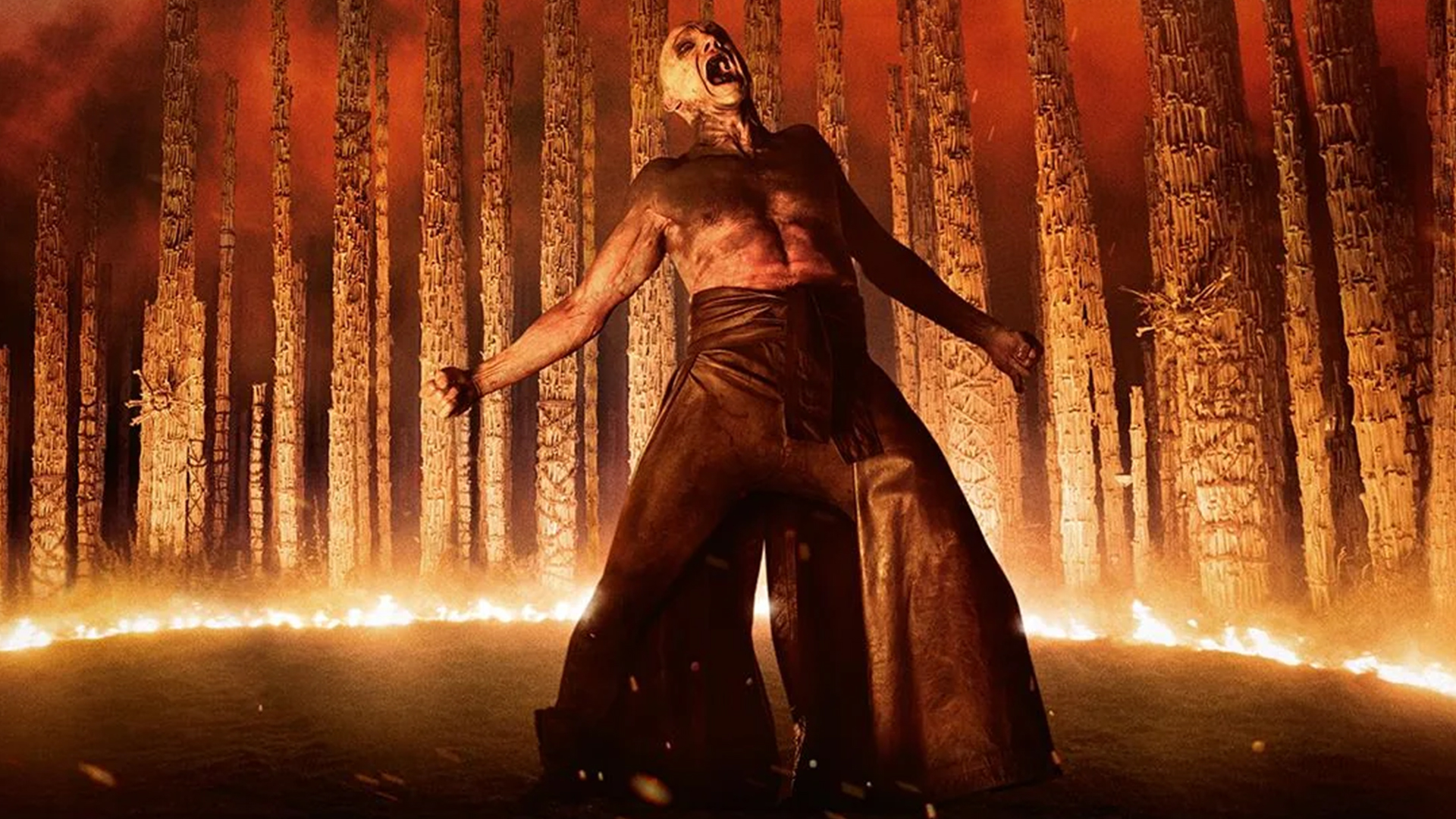 28 Years Later: The Bone Temple first trailer shows off cults, chaos and tracksuit-loving psychos
28 Years Later: The Bone Temple first trailer shows off cults, chaos and tracksuit-loving psychosThey just keep getting better
-
 28 Years Later reviews are in – can Danny Boyle recapture the original's fear factor?
28 Years Later reviews are in – can Danny Boyle recapture the original's fear factor?Worth the Sunday scaries
-
 Get ready for 28 Years Later: Where to stream the first two movies in Danny Boyle's zombie series
Get ready for 28 Years Later: Where to stream the first two movies in Danny Boyle's zombie seriesIt's all the Rage to go back to the beginning of this zombie trilogy

